Imaging diagnosis and staging of pancreatic ductal adenocarcinoma: a comprehensive review
- PMID: 32335790
- PMCID: PMC7183518
- DOI: 10.1186/s13244-020-00861-y
Imaging diagnosis and staging of pancreatic ductal adenocarcinoma: a comprehensive review
Abstract
Pancreatic ductal adenocarcinoma (PDAC) has continued to have a poor prognosis for the last few decades in spite of recent advances in different imaging modalities mainly due to difficulty in early diagnosis and aggressive biological behavior. Early PDAC can be missed on CT due to similar attenuation relative to the normal pancreas, small size, or hidden location in the uncinate process. Tumor resectability and its contingency on the vascular invasion most commonly assessed with multi-phasic thin-slice CT is a continuously changing concept, particularly in the era of frequent neoadjuvant therapy. Coexistent celiac artery stenosis may affect the surgical plan in patients undergoing pancreaticoduodenectomy. In this review, we discuss the challenges related to the imaging of PDAC. These include radiological and clinical subtleties of the tumor, evolving imaging criteria for tumor resectability, preoperative diagnosis of accompanying celiac artery stenosis, and post-neoadjuvant therapy imaging. For each category, the key imaging features and potential pitfalls on cross-sectional imaging will be discussed. Also, we will describe the imaging discriminators of potential mimickers of PDAC.
Keywords: Computed tomography; Magnetic resonance imaging; Pancreatic cancer; Treatment response; Tumor resectability.
Conflict of interest statement
The authors declare that they have no competing interests.
Figures

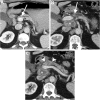





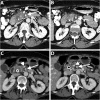

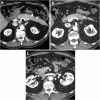

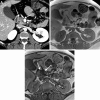
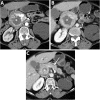

References
-
- Siegel RL, Miller KD, Jemal A (2016) Cancer statistics, 2016. Cancer statistics, 2016 66:7–30. doi: 10.3322/caac.21332 - PubMed
-
- Pelaez-Luna M, Takahashi N, Fletcher JG, Chari ST. Resectability of presymptomatic pancreatic cancer and its relationship to onset of diabetes: a retrospective review of CT scans and fasting glucose values prior to diagnosis. Am J Gastroenterol. 2007;102:2157–2163. doi: 10.1111/j.1572-0241.2007.01480.x. - DOI - PubMed
Publication types
LinkOut - more resources
Full Text Sources

